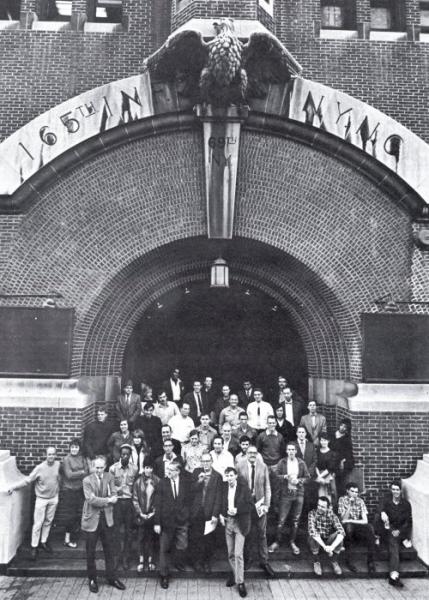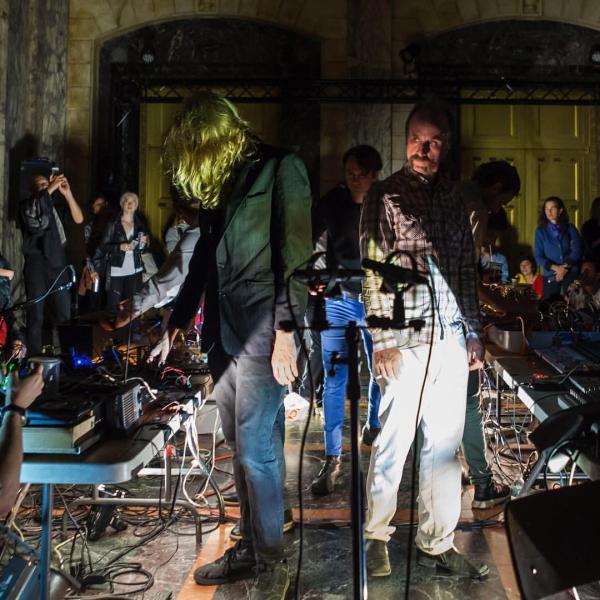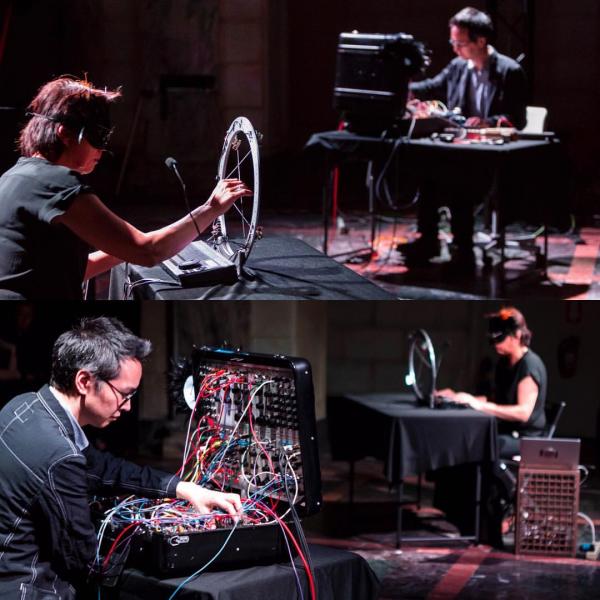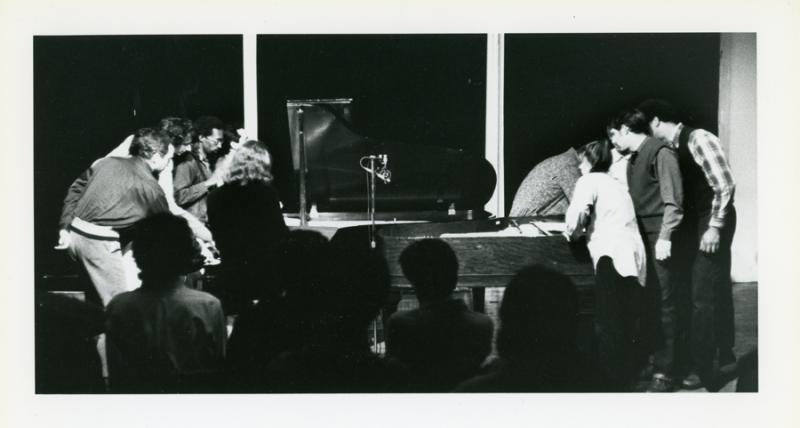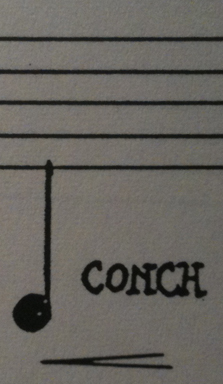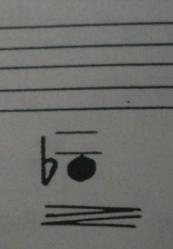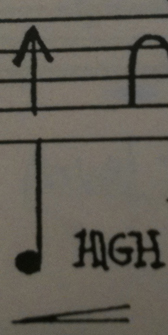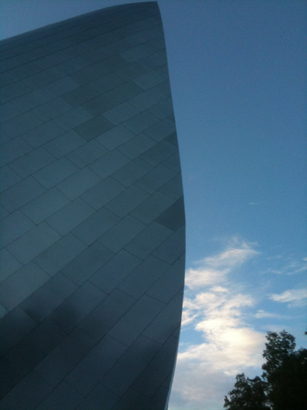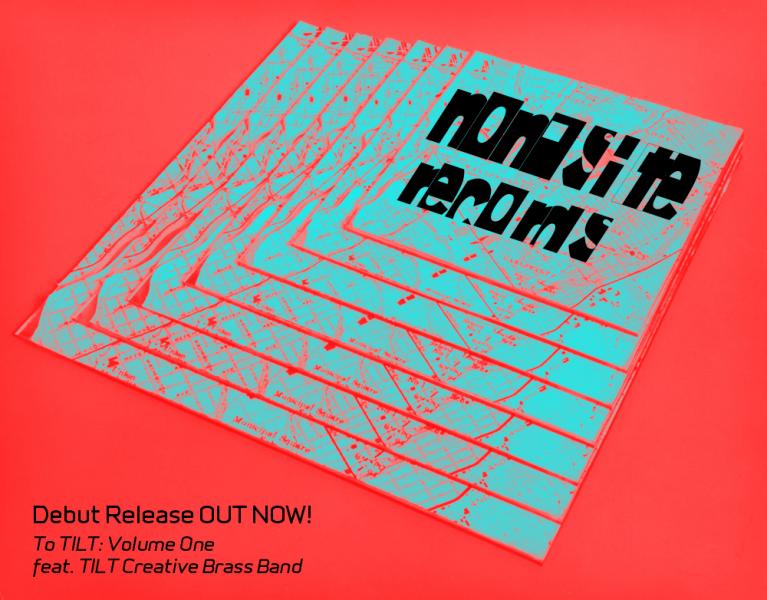Is anyone writing a book or dissertation on the NY music scene in the 90's and early to mid 00's? I need someone else to help me understand how we got to now.
Yesterday (2/23/2012)
Matt Marble likes this.
Charlie Waters For one, people become blog composers vs. really writing music, and that took up so much head space, that people forget about "real" and gave credence to tech savvy.. Just sayin'
Yesterday at 10:13am · Like · 1
Dan Joseph Where exactly do you think we are now Chris?
Yesterday at 10:44am · Like · 1
Christopher McIntyre the oblique answer: not then
Yesterday at 11:06am · Like
Christopher McIntyre the deeply oblique answer: dissimulated
Yesterday at 11:07am · Like
Jim Pugliese I believe that all matter changed after 9/11 so there is no line...
Yesterday at 11:09am · Like · 1
Ted Reichman not to be snide (and I mostly am just commenting so I can follow this conversation) but I remember a roughly equal amount of complaining about the NYC scene in that time period as now...
Yesterday at 11:10am · Unlike · 2
Christopher McIntyre "where exactly"? in a FB comment thread? not possible. the one thing i will say plainly is that, in the light of today's milieu, the reasons behind the aesthetic battles of the past that were so ostensibly necessary at the time have been at least subsumed if not nearly obscured.
Yesterday at 11:11am · Like
Christopher McIntyre and Ted, you are correct! i think it was true then, but now those complainers are 10-15 years older and a whole new cohort has simply moved on. and like it or not, that's a perfectly reasonable development.
Yesterday at 11:13am · Like
Christopher McIntyre Post-9/11. interesting Jim. Really has the potential to be seen as omni-paradigm altering as "Post-War" art.
Yesterday at 11:15am · Like
Jim Pugliese but isn't that the usual pattern? Thinking back I believe I have been through at least 4 cycles of this pattern in my short life time!
Yesterday at 11:16am · Like
Ted Reichman yeah. what I'd really like to see is a demographic analysis of the change in audience for so-called new music from the 80's to now. I actually have a lot to say about this... And a change in the performers' mentality in mid-90's when rock stars started emerging from KF scene (Soul Coughing, Cibo Matto, MMW, J Buckley...)...
Yesterday at 11:19am · Unlike · 2
Christopher McIntyre there is a pattern, Jim, but this time it's feeling to me like we've officially reached Disneyland proportions, Baudrillard's circumvolution simulacra.
Yesterday at 11:22am · Like
Christopher McIntyre and yes Charlie, I need to go write some music now!
Yesterday at 11:22am · Like
Charlie Waters What would be an example of Disneyifaction of New Music?
Yesterday at 11:28am · Like
Charlie Waters 9/11 is a good demarcation...a splinter date...
Yesterday at 11:29am · Like
Charlie Waters But one side of me feels, looking and listening to whole new music spectrum- this is a golden era, one unimaginable to me as a redneck composition student in late '80's...
Yesterday at 11:31am · Like
Jim Pugliese I tend to agree Chris but that is just a product of access to massive media so, this younger generation has to fish through tons of genre which means that even with consistent work it will take much longer for them to reach what we call a master of their craft!
Yesterday at 11:31am · Like
David T. Little I think Bob Ostertag talks about this a little in his book Creative Life, though this too centers on 9/11 if I recall. John Kennedy and I were recently having a discussion about this as well. He's got some very interesting thoughts, though I don't know if he's been writing them down.
Yesterday at 11:51am · Like · 1
Dan Joseph Chris, if you are feeling nostalgic for the aesthetic battles of the past, than why don't you put forward a new aesthetic and battle for it?
Yesterday at 12:19pm · Like
Seth Cluett I have a section in the book i'm working on dealing with the work and people happening around when bunker split to generator/early knitting factory
Yesterday at 12:53pm · Unlike · 2
Christopher McIntyre not nostalgic dcomposer, only attempting to size things up.
Yesterday at 1:27pm · Like
John Kennedy Chris, we should talk when I am in NY next...dissimulated you say...I agree with Jim about the cycles of activity (I was there 84-99). But it seems to me what has really changed in the past decade is online activity, marketing as mantra, and the press waking from slumber to piggyback onto trends.
Yesterday at 1:39pm · Like
Anthony Coleman Thank God for the Noise Kids and their ridiculous little basements! Outside of that, everything is jive. I've never felt so disengaged from any and all trends. I always had issue w/ trends, but this is different. Everybody should watch The End Of New Music to see how Sarah Palin's redefining the work "Maverick" has helped to create a new context for everything.
Yesterday at 4:37pm · Like · 3
Christopher McIntyre The Palinification of New Music. ouch.
23 hours ago · Like
Dan Joseph @anthony help me out here, who are the "Noise Kids" and what is a "ridiculous little basement"? As for "Maverick," it seems to me that was used up sometime in the mid 90s when the SF symphony held several maverick festivals that included composers from virtually every camp imaginable, rendering the concept completely moot. Such was my conclusion at the time anyhow....and that is quite the sweeping gesture, your dismissal of everything but the Noise Kids, whoever that is.....
5 hours ago · Like
Anthony Coleman Dismissal is not really it...it's just that I don't feel a connection, except in the ridiculous little basements, which remind me of those awful/wonderful places where I used to do most of my performances - until the late '80s, when the Knit started. We'd usually end up playing The Kitchen, like, once a year or something (either with my own stuff or as a sideman). But most of the language(s) I got involved with really solidified in the basements
5 hours ago · Like · 1
Anthony Coleman LPR is a perfect example of a certain alienation that I feel. Maybe its just me, maybe it's part of the Zeitgeist, maybe others feel it too. The Knit and Tonic were VERY far from perfect, but they seemed to help create some element of public space, something communal...maybe even despite themselves. Whereas my impression is that that is only part of the hype of LPR, and in fact, right up to the minute that the performance begins, and starting right from the minute it ends, it feels like the Rock Club in a Suburban Shopping Mall. It just doesn't feel situated in the same way.
5 hours ago · Like · 1
Anthony Coleman Good news, though: there are a ton of those basements again! If one doesn't mind returning to not making any money at all, it's a great thing!
5 hours ago · Like · 1
Dan Joseph ...well, it would seem difficult to continue to feel connected in the way one did in one's earlier days with the passing of each new wave of noise kids, and the passing of years. That would seem normal to me, rather than an indictment of the present, that seems to me to be the tenor of this thread
5 hours ago · Like
Tanya Kalmanovitch Experiments in teaching musical "entrepreneurship" in the conservatory suggest to me that not minding not making any money is the main thing.
5 hours ago · Like
Dan Joseph But I couldn't agree more with regard to LPR - do not like it at all...
5 hours ago · Like
Jim Pugliese Ah the days of Cafe Bustella eh Anthony? I think we played three four nights a week back then in those beautiful holes and that is where the language solidified! The fact that no one (and I mean no one) makes money playing creative or what I now call "free" music" (get it!) the basement or home is the best thing there is! Even Roulette and Issue have lost that crazy passionate energy that sparks a new movement!
5 hours ago · Like · 1
Anthony Coleman But Dan, I think you missed one point: I really DO feel connected to the noise kids I'm talking about! Strange but true...If you'want, I'll go into a little more detain about that which I do not like...Fake Maverick - ism and its World of Epigones...
5 hours ago · Like
Jacob Garchik Did anyone see that Kurt Anderson article about how decade to decade, art changed radically in the 20th century, until the last ten or twenty years, and then it didn't change at all, not counting the effect of computers? In other words, you would never mistake 1960 for 1970, but you might mistake 1995 for 2005? Does this apply to music?
5 hours ago · Unlike · 1
Anthony Coleman The End of New Music is (or should be) a basic text:
5 hours ago · Like
Anthony Coleman http://documentaries.documentaryfilms.net/The-End-of-New-Music.html
5 hours ago · Like
Dan Joseph @anthony feel free to go into more detail about fake Mavericks!
5 hours ago · Like
Jim Pugliese I have to go down here saying I am totally connected with the new noise kids! That is where the energy and real passion is brewing! My seniors at La Guardia are incredible! Not only are they passionate, innovative and virtuosic but they know their history right up to this moment! There is a scene brewing for sure!
5 hours ago · Like · 1
David Watson @Seth ... where / how are you researching - since you weren't actually there...
@Jim...when you say 9/11... that's denoting 7.5 years of Giuliani and all those changes, right ?
@Anthony .. for sure ...but that can also be a kind of contextualization of ... just getting old(er), right ?
@all .. when I arrived here, '87, nothing could've prepared me for 50% of everything I was interested in happening in one square mile.
!!!
4 hours ago · Like · 2
Anthony Coleman David - which comment of mine are you referring to?
4 hours ago · Like
Mary Jane Leach Also, when the Berlin Wall came down, things started changing a lot. A lot of funding dried up - some due to the fact that "we won" and didn't have to spread our art around, as well as other countries becoming more insular, and the sudden demonizing of artists by the right wing in this country - its transferring the enemy from outside to within our ranks (always got to have an enemy to rail against doncha know).
4 hours ago · Like
Jeb Bishop "In other words, you would never mistake 1960 for 1970, but you might mistake 1995 for 2005? Does this apply to music?" -- Jason Lanier makes an argument like this re music in You Are Not a Gadget
4 hours ago · Like
Jeb Bishop oops, Jaron
4 hours ago · Like
Jeb Bishop -- though he is talking more about "pop" music forms
4 hours ago · Like
Jim Pugliese @ David, I think I just meant that we all had the wind knocked out of us and, in my humble opinion, became more subdued in our approach. It was just a shift which I believe had some consequence. Simple really, didn't mean anything deep.
4 hours ago · Like
David Watson @Anthony .....which comment ?..well ... little bit of everything. It is/was a great time when a bunch of people are actually affecting each other. For sure.
But there's inevitably some nostalgia in there, affecting the way one puts it together.
4 hours ago · Like
Mary Jane Leach Oh, and to answer you literally, Bernie Gendron and Ryan Doheney are both writing about the downtown scene, although not specifically the 90s and on.
4 hours ago · Like
David Watson @ Jim ....definitely .. I was just wanting to put that in a context. Boho NY that a young person could move to had already been hammered. These things went together.
Who is writing the book on the Noise Action Coalition ...job for you, JIm ?
4 hours ago · Like · 1
Jim Pugliese I just realized that the day I was supposed to start teaching composition @ La Guardia HS was 9/11/2001. I never made it to the school but in looking back I now realized a slow but consistent development in the work and emotion of the students. It's only in the last two years that I feel an incredible passion and camaraderie among the students. It was gradual and as David said they are truly affecting each other.
4 hours ago · Like
Jim Pugliese Ha, David I think I will leave that one to Ribot....I would certainly contribute though.
4 hours ago · Like
Ted Reichman not sure I can follow the thread of this conversation anymore, but I think that "scenes" are hard to define and have limited lifespans. look at art taylor's notes and tones and read the bop and post-bop jazz players ranting about how their scene is dying- in the early 70's. and they were right! most of them had been working for less than 20 years at that point- some were still in their 30's. (look at the arc of tony williams's career for example). what we think of as rock "scenes" probably last less than five years- in fact, does anyone think of rock "scenes" even existing anymore? If we date the downtown NYC scene back to late 70's, I think we should count ourselves lucky that it lasted as long as it did- and if it lives on in distorted form preserved on the one hand by non-profits and the corporations, foundations and wealthy individuals who support them, and on the other hand by the no-money noise basements then that's how it lives on.
4 hours ago · Like · 1
Michaël Attias I don't think less money is the answer --what is less than zero? and it's not about nostalgia or choosing allegiance with any particularly vital splinter of what is being made now - I believe there is an enormous amount of vital music coming from every direction. But no venue has come to consistently fill the gap KF and Tonic left with their passing, in terms of musics - generations, scenes - actually mixing, pollinating, attacking, challenging and contaminating each other in the same physical space often in the same night, not online or in someone's ipod. and there's no shortcut to that -- on one side we have endless splintering of basement spaces that have no subterranean tunneling to connect them - on the other, somewhat monied and self-aggrandizing spaces that allow publicists and bloggers to determine and define the currents rather than the actual praxis of musicians and audiences making and hearing music this very moment --
4 hours ago · Like · 2
David Watson MIchael - please write the book.
4 hours ago · Like · 1
Ted Reichman michael you're definitely right. and like david said- when so much was centralized in lower mahattan, it was a very different thing...
4 hours ago · Like · 1
Jim Pugliese Michael and Ted, I think you have summed up everything that everyone said in this thread! Bravi.....Now we can all write at least two books together in camaraderie!
3 hours ago · Like
Christopher McIntyre many thoughts swirling about here. of course michaël is perfectly correct. at least, from the perspective of the exact cohort reading this thread. i think there is definitely an aging thing going on (for me in any case), but i wouldn't agree that there's a lack of objectivity because of it. in any case, 2 things have been established herein: michaël needs to right "the book", and, improbable as this seemed a few months prior to its closing, Tonic is in fact missed. by some. basta.
9 minutes ago · Like
Jacob Garchik It's the Goldilocks effect. A club has to be just right: not too big, not too small, in downtown Manhattan, with a bar, not too expensive, with an open-minded booking policy.
Friday at 7:12pm · Like · 1


